1. What is My Son Sanctuary
My Son Sanctuary is an ancient Hindu temple complex located in central Vietnam. This UNESCO World Heritage Site was built between the 4th and 14th centuries by the Champa Kingdom and was dedicated to the worship of the god Shiva. My Son was more than just a place to build temples and perform rituals and worship; it was a place to confirm the spirits of the Cham Kings’ reign and commemorate victory and great conquests. The sanctuary is situated in a lush green valley surrounded by hills and streams, making it a picturesque destination for tourists.
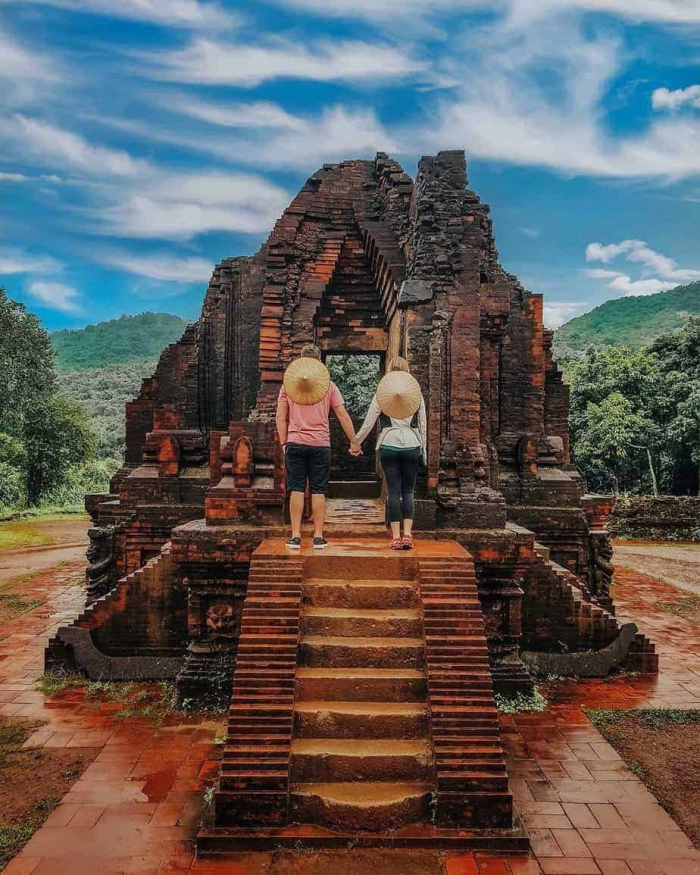
My Son Sanctuary consists of over 70 structures, including temples, towers, and tombs, many of which have been restored to their original splendor. Visitors can explore the complex and marvel at the intricate carvings, sculptures, and architectural details that showcase the skill and creativity of the Champa people. Highlights include the 24-meter-tall main tower, known as the Ky Son Temple, which was built in the 11th century, and the nearby Hall of the Kings, which features ornate reliefs depicting scenes from Hindu mythology.
2. Where is My Son Sanctuary
The My Son ruins are in the province of Quang Nam in central Vietnam. The sanctuary is situated in a lush green valley surrounded by hills and streams, making it a picturesque destination for tourists.It is located in the Duy Tan Commune, Duy Xuyen District of Quang Nam Province, about 43 kilometers west of Hoi An and 70 kilometers southwest of Da Nang. The conservation has a total area of 1158 acres. While the Cham governed the area, the Champa medieval capital of Tra Kieu (Simhapura) was only 10 kilometers away, allowing easy access to this spiritual center.
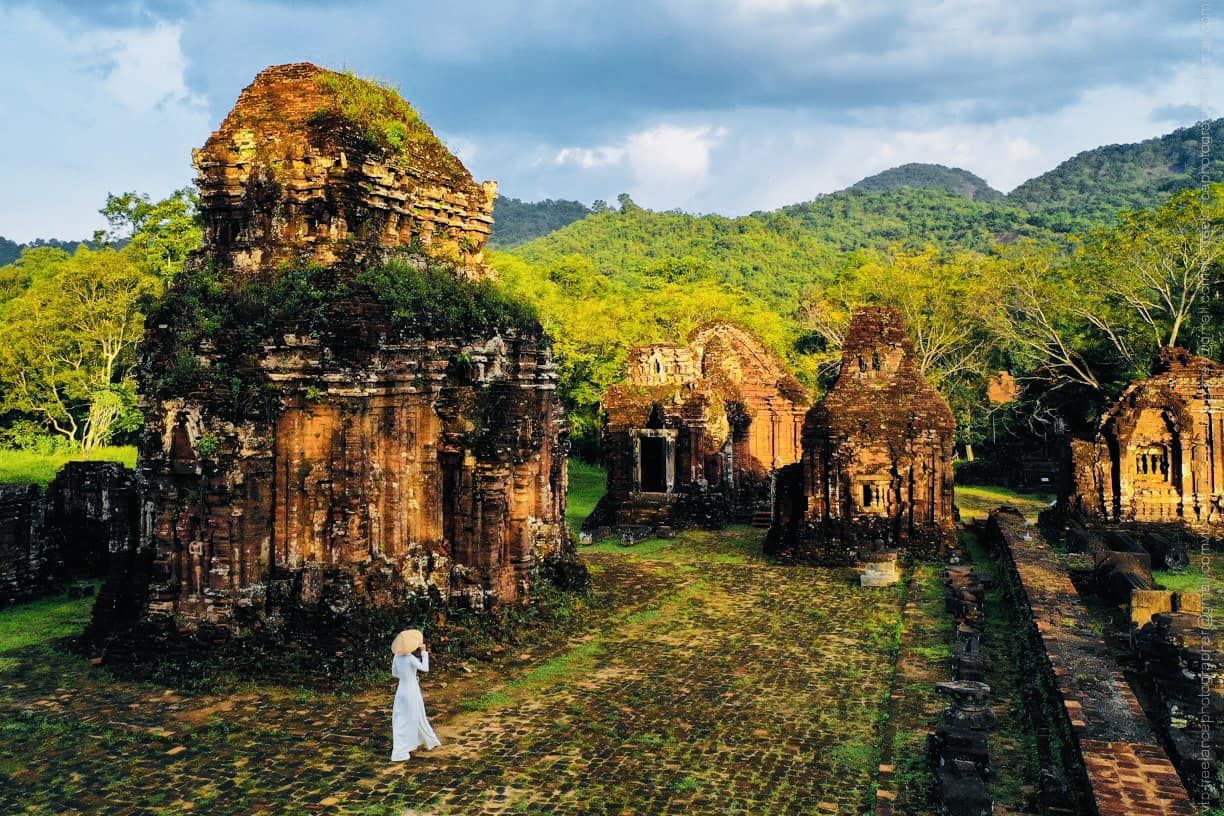
3. My Son Sanctuary entrance fee
The entrance ticket price for My Son sanctuary is 150,000 VND per person. This cost covers both the 2-kilometer electric car ride to My Son’s center and the artistic performance. However, the price of a ticket does not include the tour guide. I strongly advise you to hire a tour guide to understand the place thoroughly. Otherwise, you will go around understanding nothing.
3.1. Opening hours
My Son Sanctuary opens from 6:30 am to 5:00 pm all days of the year, including holidays and Tet. The best time to visit My Son’s sanctuary is early morning. Because only then can you observe the way the valley is awakening in the sun with the shadows of the slanted tower against the grass.
3.2. The history of My Son Sanctuary
The history of My Son Sanctuary dates back to the Champa Kingdom, which ruled over parts of present-day Vietnam from the 2nd century until the 19th century. The Champa people were deeply influenced by Indian culture, and they built a vast network of Hindu temples and shrines throughout their empire. My Son Sanctuary was one of their most important religious sites, serving as a center for worship and pilgrimage.

The complex was constructed over several centuries, beginning in the 4th century under the reign of the Cham king Bhadravarman. Over time, the complex grew to include over 70 structures, including temples, towers, and tombs. The temples and other structures were built from locally quarried sandstone, and they were adorned with intricate carvings and sculptures that depicted scenes from Hindu mythology.
The site was rediscovered by French archaeologists in the late 19th century, and restoration work began in the early 20th century. Despite being damaged by wars and natural disasters, My Son Sanctuary has managed to retain much of its original beauty and cultural significance, and it is now recognized as one of the most important archaeological sites in Southeast Asia.
4. Ancient Cham Architecture at My Son Sanctuary
4.1. The Ancient Road
The gate tower is the first structure you encounter if you enter My Son Sanctuary via the left path. And from that tower, there is an old road that is 8 meters wide, has two parallel walls, and has a surface that has been excavated to a depth of 1 meter below ground. Some sources claim that only kings and nobles were permitted to enter the tower, which was used for sacrifices and rituals. The sanctuary’s center was once reached by continuing down the road for several hundred meters.
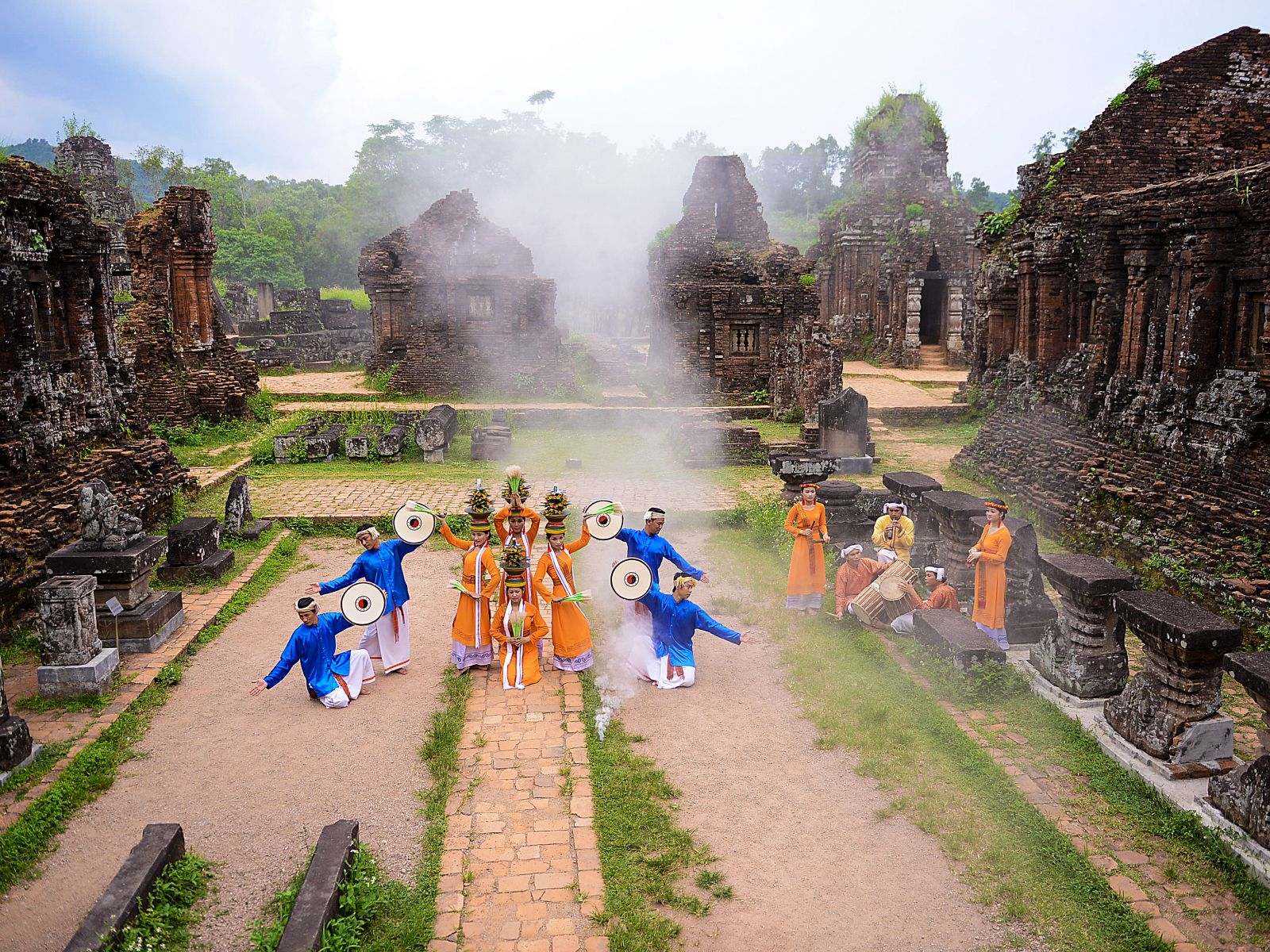
4.2. The Building Materials and Techniques
Until now, the building methods employed by the Cham builders are still not fully understood. Conflicting explanations for the bricks’ burning, the mortar that held them together, and the ornamental carvings that were discovered on them are just a few of the unresolved difficulties. Most people agree that fire was used to harden the bricks, but did it happen during or after construction? Likewise, did the intricate carvings on the exterior walls come before or after building? How were the bricks attached? Was resin from trees a lost technology? The sophisticated and solid architecture of My Son Sanctuary is still an unanswered question for researchers.
5. Things to visit at My Son Sanctuary
5.1. My Son Sanctuary Museum
My Son Sanctuary Museum is a must-visit destination for tourists who are interested in learning about the history and culture of the Cham people. The museum is located within the My Son Sanctuary complex, houses a collection of artifacts and exhibits that provide insight into the history and culture of the Champa people, who were the original inhabitants of the region.
Visitors to the museum can see a variety of exhibits that showcase the Cham’s artistic, cultural, and religious traditions. These exhibits include ancient sculptures, pottery, and artifacts that were excavated from the My Son Sanctuary site. The museum also features multimedia displays and interactive exhibits that allow visitors to learn more about the Cham people and their way of life.

5.2. The temple complex
In addition to the museum, visitors to My Son Sanctuary can explore the ancient temples and towers that make up the complex. The temples are known for their intricate carvings, sculptures, and architectural features, and they offer a fascinating glimpse into the religious beliefs and practices of the Cham people.
The temple complex is divided into several groups of temples, each with its own unique features and architectural style. The main group, which is the most well-known and heavily visited, contains around 20 temples and towers that are spread out across a large area. Visitors can explore the temples on foot, and many of them offer stunning views of the surrounding countryside.
Some of the most notable temples in the complex include the Khuong My Temple, which is known for its impressive architecture and intricate carvings, and the Tra Kieu Temple, which is home to a large statue of the Hindu god Vishnu.
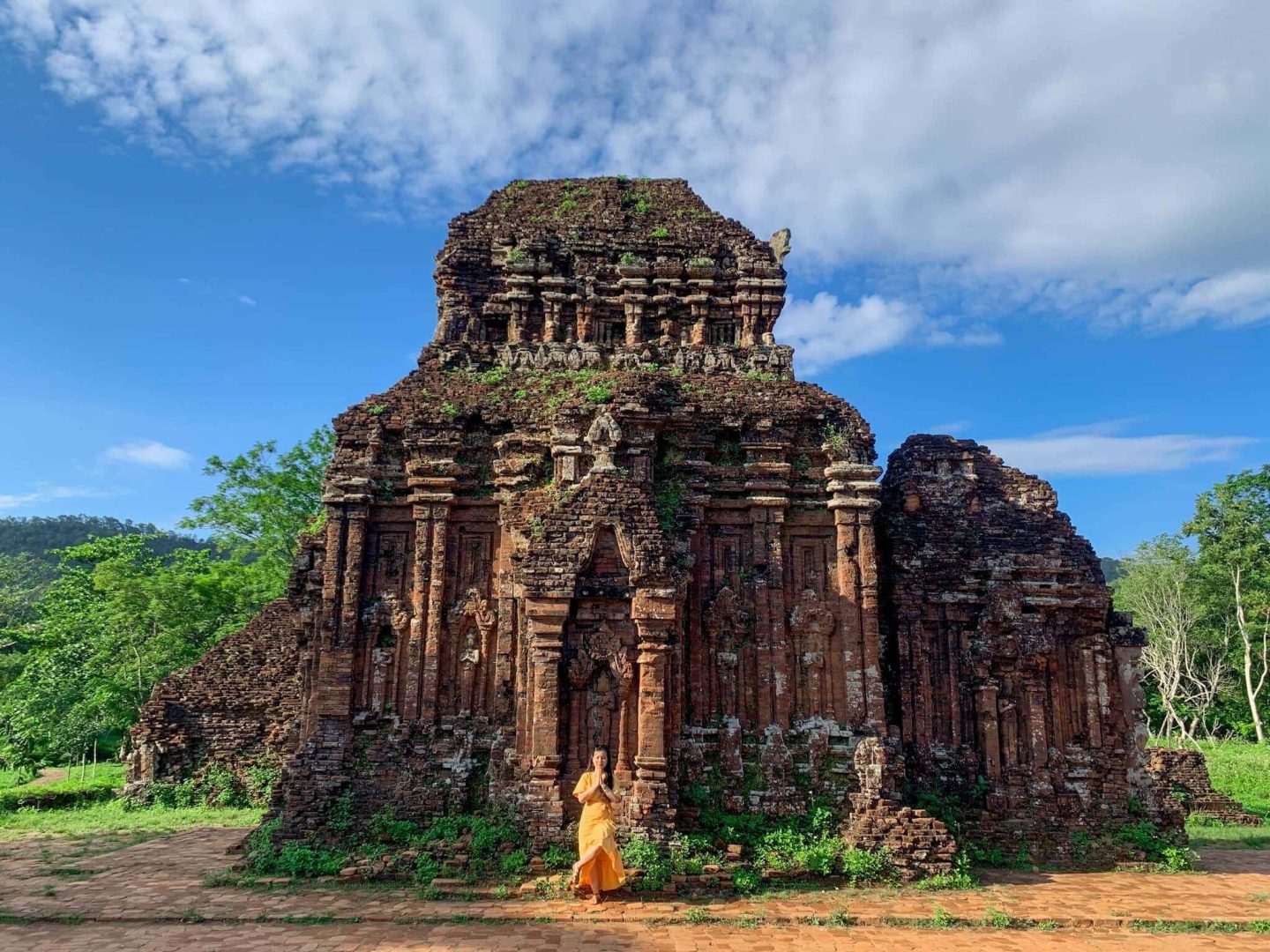
5.3. Aspara Dance, Folk Dance & Music
Visitors to the temple complex can also attend cultural performances and traditional music shows – Cham show that are held throughout the day. These performances provide visitors with a unique opportunity to experience the rich cultural heritage of the Champa Kingdom, which ruled over the region for centuries.
Especially in these shows, visitors can watch the Apsara Dance a traditional dance that originated in Cambodia and is now performed throughout Southeast Asia. The dance is typically performed by women who wear elaborate costumes and makeup, and who move gracefully and fluidly to the rhythm of traditional music. The dance is often performed as a tribute to the gods and is considered to be a form of religious expression.
In addition to the Apsara Dance, visitors to the My Son Sanctuary can also enjoy a variety of folk dances that showcase the traditional music and dance of the region. These dances are typically performed by local villagers and feature a range of styles and techniques, including graceful movements, acrobatic feats, and intricate footwork.
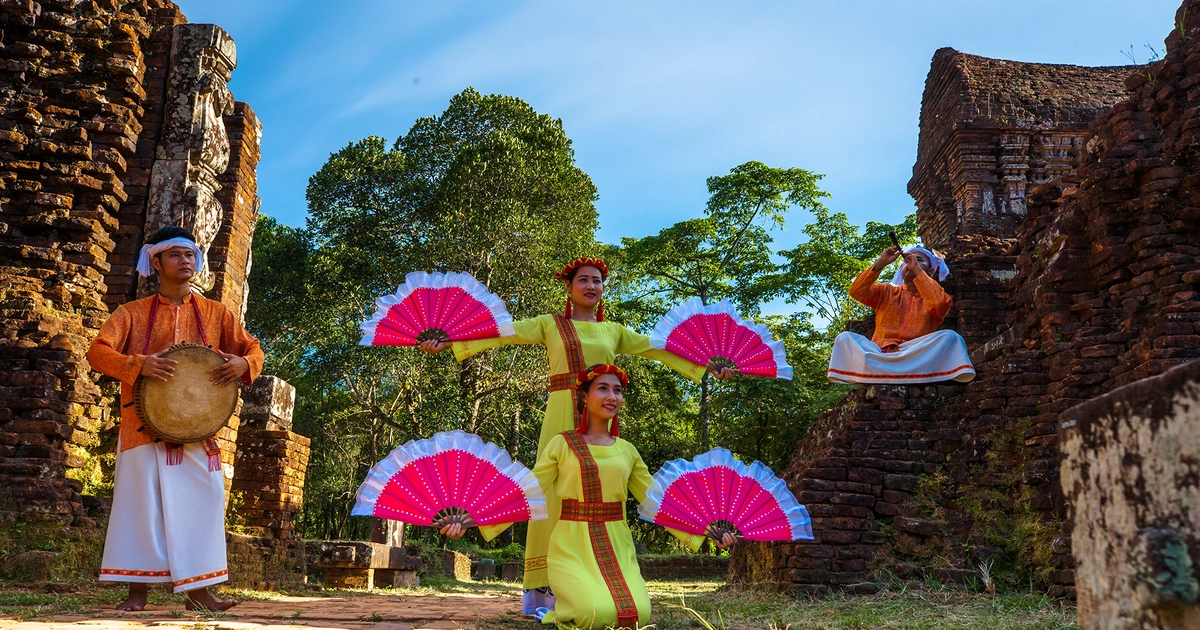
6. Conclusion
My Son Sanctuary is a fascinating destination for tourists who are interested in history, architecture, and culture. With its stunning temples, intricate carvings, and traditional performances, the My Son Sanctuary is a must-see destination for anyone interested in exploring the cultural traditions of Vietnam. If you want to explore more interesting destinations in Vietnam, please visit our website – Metta Voyage.
Contact us
Website: mettavoyage.com
Email: info@mettavoyage.com
Hotline 24/7: + 84 989 383 572

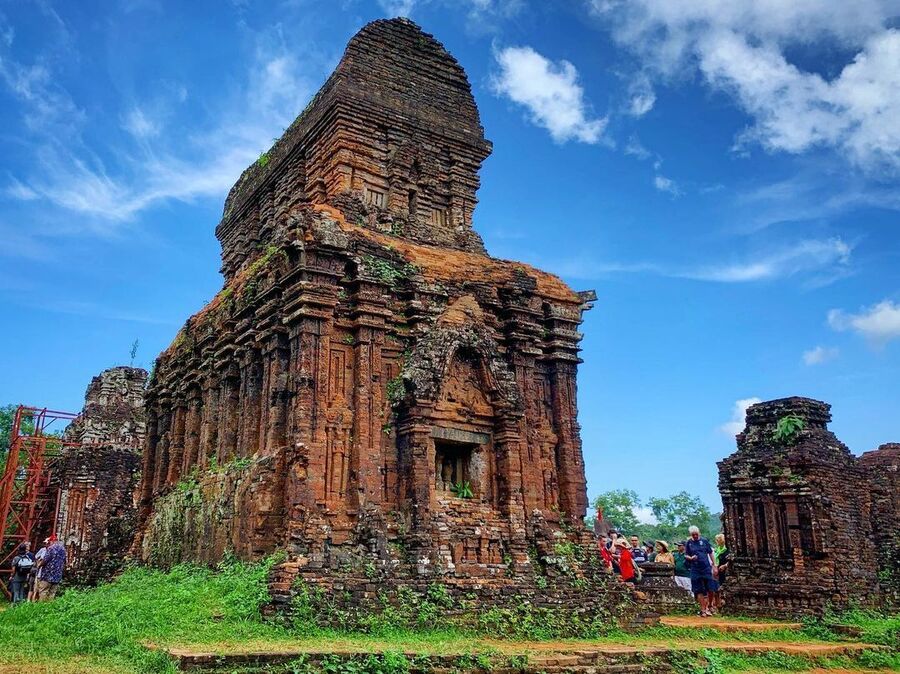

0 Comment